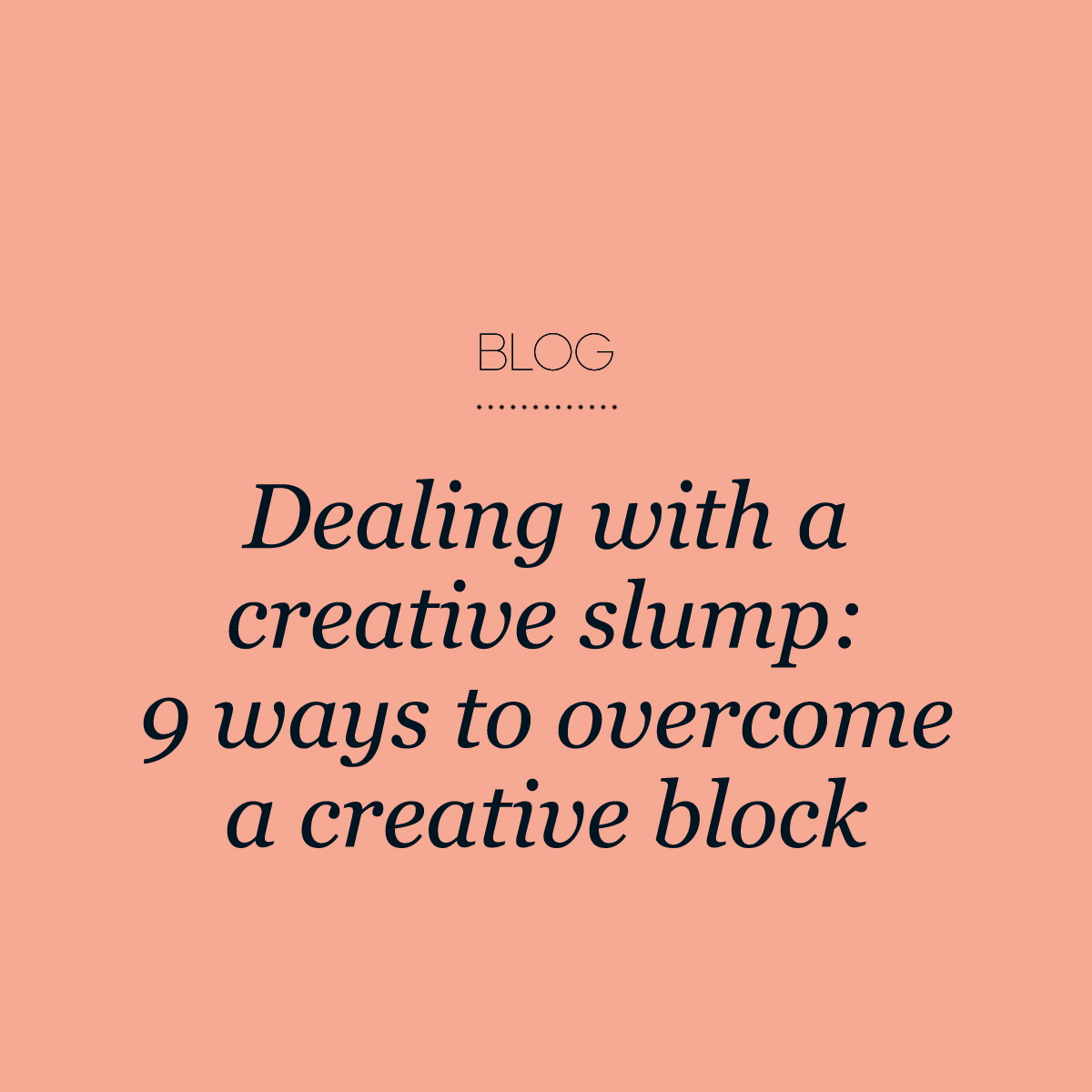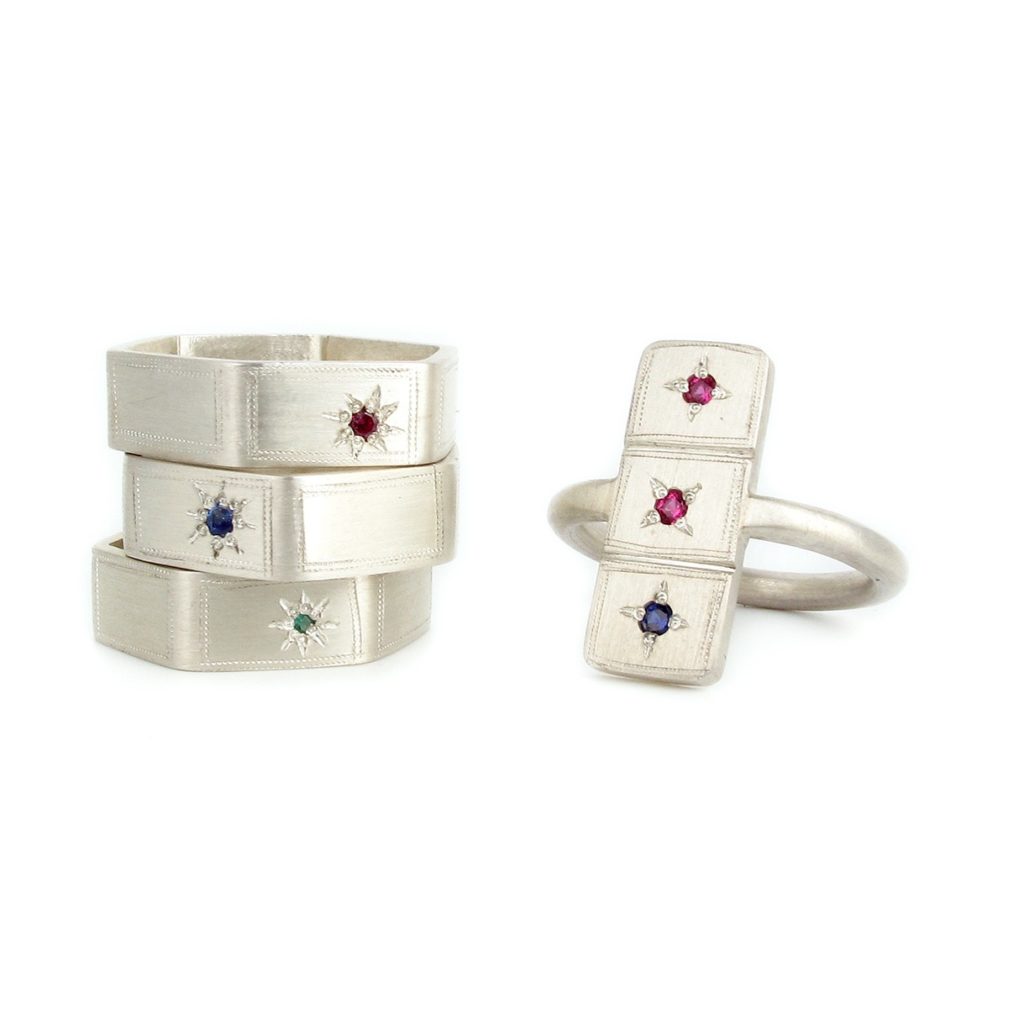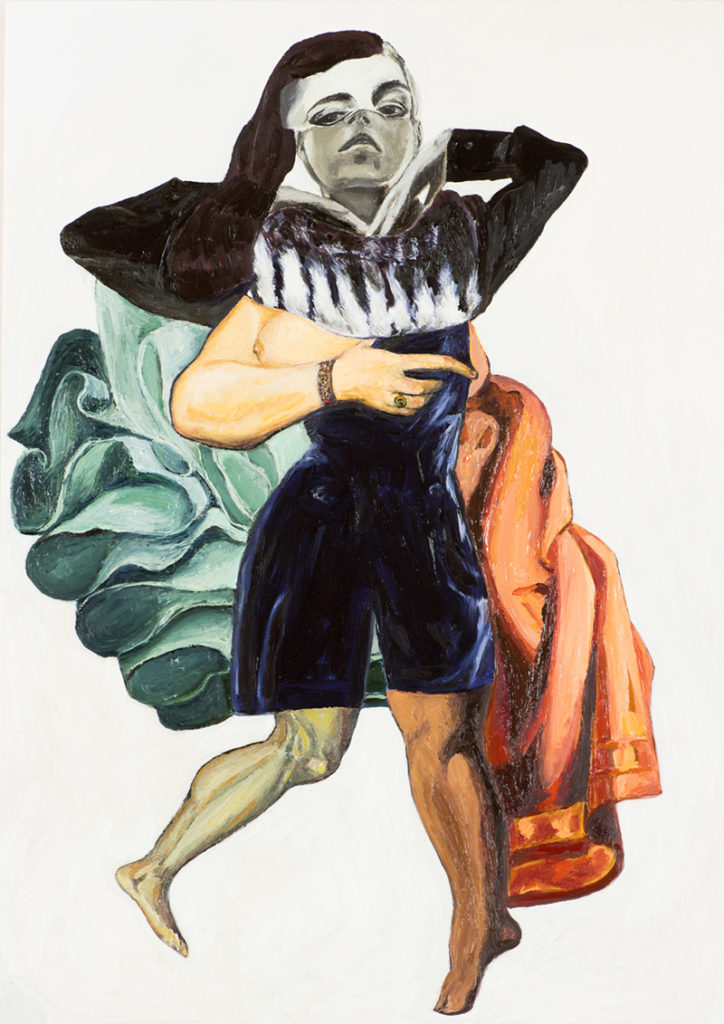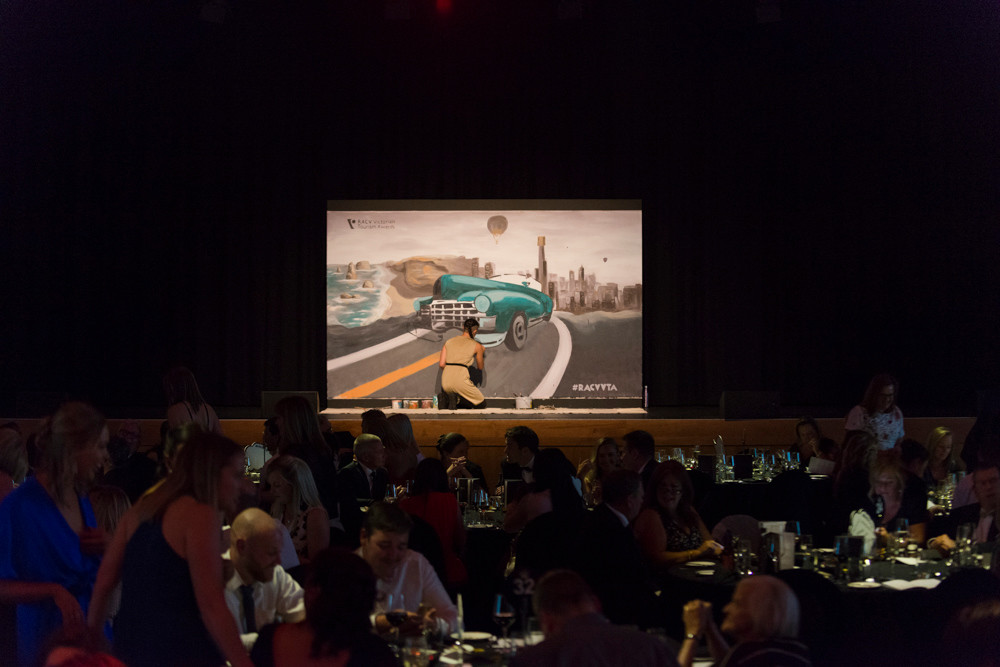Dealing with a creative slump: 9 ways to overcome a creative block
The moment I start thinking about designing a new jewellery collection, a part of my brain panics.“Nope!” it says. “You can't do that.” And Creative Block comes to visit.
I stare at a blank page in my sketchbook. I over-think. “What if I really can’t design anything?” “How can I be original?” “What materials should I work with?” I find myself wanting to see the whole finished collection in my mind before I even put pen to paper. Eventually, something distracts me and I shut my book with a mental note to come back to designing later. But how long “later” takes depends upon how I deal with this creative slump.
While there are plenty of ways to find inspiration—Pinterest, a trip to an art gallery, a new magazine—inspiration is not action. Feeling inspired is not always enough to break through a creative slump. You need to take action to deal with a creative slump. Different things work at different times, and I have created a list of actions that have worked for me.
9 actions to deal with a creative slump
- Don’t start with a blank page. Break the ice with a doodle. Sketch your coffee cup, draw the design of you balcony railing, try to draw a perfect circle. It’s easier to keep making marks once a mark has been made.
- Take away the expectation. Stop thinking big (“I need to design a whole collection that will sell”) and start thinking smaller: “If I were going to make myself a pair of earrings, what might they look like?”
- Make it a habit. You will have more success by picking up your sketchbook for a short period several times each week than for one long session per week. Keep pushing ideas that you have been previously drawing. Play with scale. Introduce texture. Bring in a new shape to complement or contrast the shapes in play.
- Take a shower. If you are trying to solve a problem or make a decision, have a shower. Something about running water and a few quiet moments often results in a string of ideas.
- Look back through old sketchbooks. Flip through your portfolio of finished work. Little kernels of ideas are most likely still waiting there for you. Looking at them now, you will bring new experiences to them and never know where they could end up.
- Make something different. Try a class in basket-making, pottery, macrame, watercolours, life drawing. Rip out pictures that speak to you in magazines and create a collage. Introduce a new material to your practice. Make something you don’t have to sell and it will help you design something you can sell.
- Fill your well.Listen to podcasts. Watch films. Read widely. It is all sun and rain for the seeds you are germinating.
- Step away.Know when to give yourself space from your work and relieve the pressure. There will be flows—creative highs and lows—and you are either on the way up or on the way down. Both are necessary for creation.
- You are not your work.I struggle with this, as designing and creating is so personal. If my work is no good I feel like I am no good. If my sales drop, I often wonder what I have done. Regardless of your work's reception, good or bad, you are not your work. Make that distinction and smash the creative block that comes from that fear!
Christina Lowry is a designer and jeweller who creates fine jewellery for creatives. Her work is featured in several Australian galleries, as well as in her online store. Christina fell in love with jewellery making while studying a Bachelor of Fine Art/Visual Art. Each piece is lovingly made by hand in her Brisbane workshop, incorporating precious metals and gemstones, and using traditional metalworking techniques. Christina can be found at christinalowrydesigns.com, and on Facebook and Instagram (@christinalowrydesigns).
All images photographed by Trudi Le Brese Photography for Christina Lowry Designs
Industry Insights: Miranda Moreira, artist and maker at Bride&Wolfe
Many of you know the beautiful objects Miranda Moreira creates for her business Bride&Wolfe, however, many don’t know its fairytale beginnings. From studying fine art with high distinctions and getting a gallery contract, to completing an apprenticeship with Greg Malouf, to becoming the private residential chef for Gerard Depardieu in Paris for 6 years. I certainly didn’t know and it makes me love Miranda’s work more.
I asked Miranda to share her story from amazing beginnings, how she manages her wholesaler relationships, the benefits of markets and diversifying, her recent invitation to the Paris Design Show and the importance of trusting your instincts.
From art school, to living and working in Paris, how did you arrive at exploring and establishing your own successful product range and business?
The Bride&Wolfe journey is a little bit of a fairytale. I studied fine art and finished well with high distinctions, but after years of schooling I’d run out of puff, and had a strong case of wanderlust. Keen to find a way of exploring the world with a creative career that wasn’t so precarious, I reinvented myself as a chef, finishing my apprenticeship with Greg Malouf in 1999 and immediately taking off for Europe.
I was working as a chef in London when I met and became friends with Carole Bouquet and her partner, the actor Gerard Depardieu. Within weeks I was in Paris, living in Gerard’s house as private chef for the next six years.
It was such a unique experience of French culture. I lived alongside their amazing art collection- original Rodin sculptures in the living room, Picabia paintings on the walls, Matisse etchings in the bathroom, it was mind-blowing. I learnt French quickly and my working life involved making dinners and conversation with film directors, actors and writers.
This high cultural influence was a great contrast to my own personal experience of Paris; wandering for miles across the city with my camera in hand, finding treasure in flea markets and artisanal shops, making new friends, just soaking everything in. It was brilliant.
I was still pursuing my art, making paintings, sculptures and collages, working from an old printmaking atelier in the 11th arrondissiment. I knew I’d eventually move home to Melbourne and couldn’t see myself as a chef forever, as much as I enjoyed it.
This is when the concept for Bride&Wolfe really started forming in my mind- living in Paris, making art, and imagining a working life back in Australia creating beautiful and personal objects for people’s homes.
As a maker, you are constantly exploring materials and construction. With a busy production schedule maintaining orders, do you purposefully allow time to create new products?
Early mornings and late evenings are set aside for writing and sketching up ideas; this is how new products are born.
I don’t know if routine is the right word as every day is so different, but to keep happy and productive my priorities are:
Music time- it’s a constant at home and at work.
Art time- whether it’s visiting local galleries or burying myself in an art book, art is part of the fabric of my life.
Exercise time- I have a ridiculous dance-based workout routine that has increased my levels of ‘happy’ and made my working days more productive.
Alone time- A little alone time everyday is important. It’s how I recharge and refocus when the (wonderful!) demands of work and family can get too much.
How did you establish your relationships with your wholesalers/stockists?
I love my stockists, and for the most part I really enjoy wholesaling.
I’d say do your research and follow the 80-20 rule. Like all industries there are some challenging personalities in retail, and some stockists are very high maintenance. This is okay, but if they are not making good steady big orders then you need to decide if the time spend dealing with them is worth it!
Despite an established network of wholesalers/stockists, including being part of the David Bowie International touring exhibition, why are markets still important to you and what makes participating in a market successful for you?
There are some fantastic design markets in Oz, but they can be a lot of hard work. While my main focus has always been the online shop, markets are a fantastic way to connect with my customers. I love the feedback. My customers are super cool people and often involved in creative industries; with each new product the customer base grows and evolves. Recently I’ve noticed men really getting into Bride&Wolfe, which is brilliant.
What percentage of your sales come from your own ?
The online shop makes up the majority of my sales- wholesaling is wonderful but sometimes not very cost effective. Most of my international stockists have found me via design blogs and magazines.
Diversifying is really important, but also keeping it contained and balanced- I instinctively grow the brand at a rate I’m comfortable with.
Your 'Mesh Shelves' product range (above) recently represented Australia at the 2016 Paris Design Week. How did this opportunity transpire and do you actively market Bride&Wolfe to be internationally recognised?
I was approached by a French curator who had seen my products on an international design blog, and he thought The Mesh Range range would work well in Paris, and he was right. It was a fabulous show, and the whole week in Paris was a dream.
Up until I started Bride&Wolfe I had no idea what PR or marketing meant- but really I see all communication as a form of marketing. Whether it’s an Instagram video ‘story’, having a laugh with an upcoming stylist or being involved in a Paris design show; at it’s essence it’s all about communicating, it’s about creating and sharing information, and growing brand awareness.
Lastly, how important are your support networks and what is some of the best advice you've received when you were establishing yourself?
My friends are my support networks. Spending time with my girlfriends is super important - aside from the general hilarity that unfolds when we’re together, they inspire me, level me and guide me.
Look at businesses you admire and analyse what it is about them that works. Lots of research, book reading and asking the right advice, have a manageable growth plan and trust your instincts.
Annette Wagneris a designer, marketer, creative consultant, artist, and writer. She is also on the board of the Creative Women’s Circle. Obsessively passionate about the arts and the creative process, she is determined to not talk art-speak and instead focus on supporting and sharing concepts and insights most creative types crave to know.
Finalists' round up
Last week we shared our three winning submissions for our new membership cards. We were overwhelmed by the amazing response. The sheer number of quality entries which made it very hard for our judges on the CWC Board to narrow down. We therefore thought it only fitting to also share the work of our other finalists for everyone to enjoy.
We were blown away not only by the number of submissions we received, but also the wide range of styles of work! The backgrounds and professions of those who submitted perfectly sums up why CWC is so special, bringing together talented creative ladies across a diverse range of fields, from graphic designers, artists and illustrators to interior designers, architects and textile designers.
Scroll on down to check out their amazing work. Thank you to everyone who submitted. We are so proud of you all!
Our top posts for 2016
Can you believe it is nearly the end of 2016? Gah! I feel like I only just recovered from last Christmas. We are getting ready to take a well-deserved blog break over the holidays, so have prepared a round up of our top posts over the last year for your reading pleasure! Bookmark this post to read later on the beach, in a hammock, or on the couch over a glass of eggnog and the shortbread biscuits meant for Santa.
Small town creative: how to live, work and create in a regional area
By Jasmine Mansbridge
I am writing this blog post while also preparing for a trip from my hometown in Hamilton, Victoria, to Sydney. So it really is a good time for me to think about what is means to be a creative person living outside of the city and how I have gone about finding and generating creative work opportunities.
How to succeed as a multi-passionate creative
By Bec Mackey
Do you find yourself pulled in different directions by your work and your creative projects? Are you easily distracted by a new idea or flash of inspiration, only to abandon it again shortly afterwards? Or maybe you’re trying to juggle working and paying the bills with a creative side project, and finding it hard to manage both at the same time. You may beat yourself up for being fickle, unable to commit, or to make a clear decision. But despite what we’re told by society, not everyone is built to have just one linear career path, and being easily distracted isn’t necessarily a bad sign. If any of the above resonates with you, it may just be that you are multi-passionate.
Branding basics: Define your brand
What is a brand? A brand is more than just a logo. A brand is who you are.
There are five fundamentals that form a brand. One cannot exist without the other, and for a brand to be successful, the fundamentals must work together to communicate everything you think, say and do.
Project planning 101
By Jes Egan
Being organised is a skill. It’s something that you can learn and refine but it doesn’t always come naturally. I have always been an organiser since a very young age. Today in my day job, that is exactly what I do. I plan and manage projects from start to finish and all that stuff in between. You may be lucky enough to have a specialist around you who will do this, or like many small creative businesses have to become a bit of a jack of all trades and apply this skill to what you are doing. Here are a few of my tips to help plan away.
How to quit your day job
By Emma Clark Gratton
You’ve been working on a creative side gig alongside your main job for a while now. You’ve got a few regular clients, are making money and are in demand. Most of all, it’s so fun and rewarding that you spend all your lunch breaks and evenings working on your ‘hobby’. If this sounds like you, it might be time to take a leap and pursue your creative project full time.
Read more...
Creative blues: five common fears and how to beat them
By Emma Clark Gratton
Working for yourself or passionately following a creative project requires a level of mental toughness and self-confidence that is hard to maintain. Dealing with rejection, financial challenges, working long hours with just yourself as taskmaster… all these things can build up until you are having an existential crisis before your morning coffee.
Tips on Live Painting
“Live painting"—when an artist is commissioned to create something in front of an audience—is quickly becoming a popular entertainment option at events such as corporate dinners, award nights, underground parties, exhibitions, and cultural festivals. Painting live at an event is an interesting and non-intrusive way to entertain an audience. Most people never get the chance to see a piece of art unfold, and find it fascinating to watch it progress.
If you are an artist, live painting can be a great opportunity to network and get your art seen, though it is completely different than creating something alone in the peace and quiet of your studio. Here are some tips to help you paint live in front of an audience.
Plan a piece that suits the event. When choosing what to paint, think about how you will paint it and whether it will be both interesting to watch and achievable in the duration of the event. Choose a theme and style with which you are very comfortable.
Pick materials suitable for the space. If you are painting indoors or near people eating, do not use aerosols or paints with strong fumes. If you are painting in a pristine environment with expensive carpet, don’t plan to create a piece that will involve splashing lots of paint around.
Go big. The point of live painting is for people to watch it happening. Your piece needs to be big enough so your body won’t block it, and should require you to move your arms and body, not just your hands. Unless it is a very small event, don’t go smaller than one square meter.
Prepare as much as possible. If you are feeling nervous, why not do a practice run? You can paint the same painting or something similar the day before, perhaps on a smaller surface, to check your process and palette. This will help you build confidence and plan your timing.
Depending on your style, it might be a good idea to sketch the painting on the surface before the event to save time. If you use light chalk or pencil, the audience won’t be able to see the sketch; it will look as if you are creating something completely from scratch.
Keep in mind that while you’re painting, you will be seen and photographed as much as the artwork. Think about how your choice of clothes can complement the art.
Get an efficient setup. Visit the venue beforehand so you can plan how to arrange your materials and tackle any problems with lighting, space, etc. Set up your materials within easy reach. Consider getting a small table for your supplies so you won’t have to lay them on the floor.
Use a limited colour palette. If you have to mix specific colours, mix them before the event. It will make the painting go a lot more smoothly if you have all the right colours and can just focus on applying them to the piece.
If you are using reference materials, don’t spend the event looking at them on your smartphone. Print out the images and have them somewhere accessible. I like to stick mine with tape to the floor in front of the painting, so my hands are free and I can check them easily, without detracting from the piece.
Consider movement and timing. While you are painting, think about your body as part of the performance. Can you make your movements more dramatic and interesting to watch? If possible, position yourself in a way that allows people to see your hands and the brushstrokes you make.
Guests will want to photograph your finished work and talk to you about your art. Finish your painting before the event ends to leave enough time to network. To make sure you are not going too quickly or slowly, divide your process in stages and set milestones for certain times. Keep a watch or phone handy so you can check your progress.
Remember: no one is judging you. It’s easy to feel nervous when you have an audience behind you, and to think people are judging your every move. Don’t let your mind go down that path. Remind yourself that people are there to have fun; they are busy interacting with each other, not staring at you constantly. Most people don’t understand the process behind a painting and won’t even notice if you do something wrong. If you make a mistake or spill paint, don’t panic: stop, take a deep breath, and just follow the steps to fix it.
Júlia Both is a visual artist from Brazil. Since moving to Melbourne in 2013, she has run Mayfield Palace, a partnership that creates art for businesses and organisations all over Australia. She shares her work regularly on Instagram (@artofboth) and at artofboth.com.
Winning submission announcement!
So we are now excited to unveil the winning designs, as voted in a secret ballot by the CWC board. These designs will be featured on new members cards sent out to all new members from early in the new year. Each of our board members said choosing their favourites was one of their toughest responsibilities yet! Next time, we think we will share the load and ask our members and followers to share!
There were so many diverse and excellent entries. Stay tuned for a post next week sharing the other finalists!
Claire Ritchie, print design and illustration.

Join our blogging team!
 For the last few years, we've been fortunate to have had a wonderful array of talented, creative ladies on our team as bloggers.
For the last few years, we've been fortunate to have had a wonderful array of talented, creative ladies on our team as bloggers.
Writers, designers, artists, small business experts... The one common thread amongst our bloggers - past and present - is their passion for sharing what they know with the wider creative community and their desire to meet lots of inspiring women and creative minds in the process. Their contributions have made the CWC website what it is - a rich and robust source of information and information for women in creative businesses. I can't thank them enough for the expertise they have shared and the time and thought they put in to their posts.
As we beginning preparing for 2017 (gulp!), we're on the lookout for a few new voices to add to the current blog contributor team. We would especially love to hear from people who enjoy writing interviews, studio tours and 'how to' posts. All bloggers are paid $50 per post.
If you'd like to join our team, email Emma with a introductory email and links to your own blog/social media to start the conversation.






















